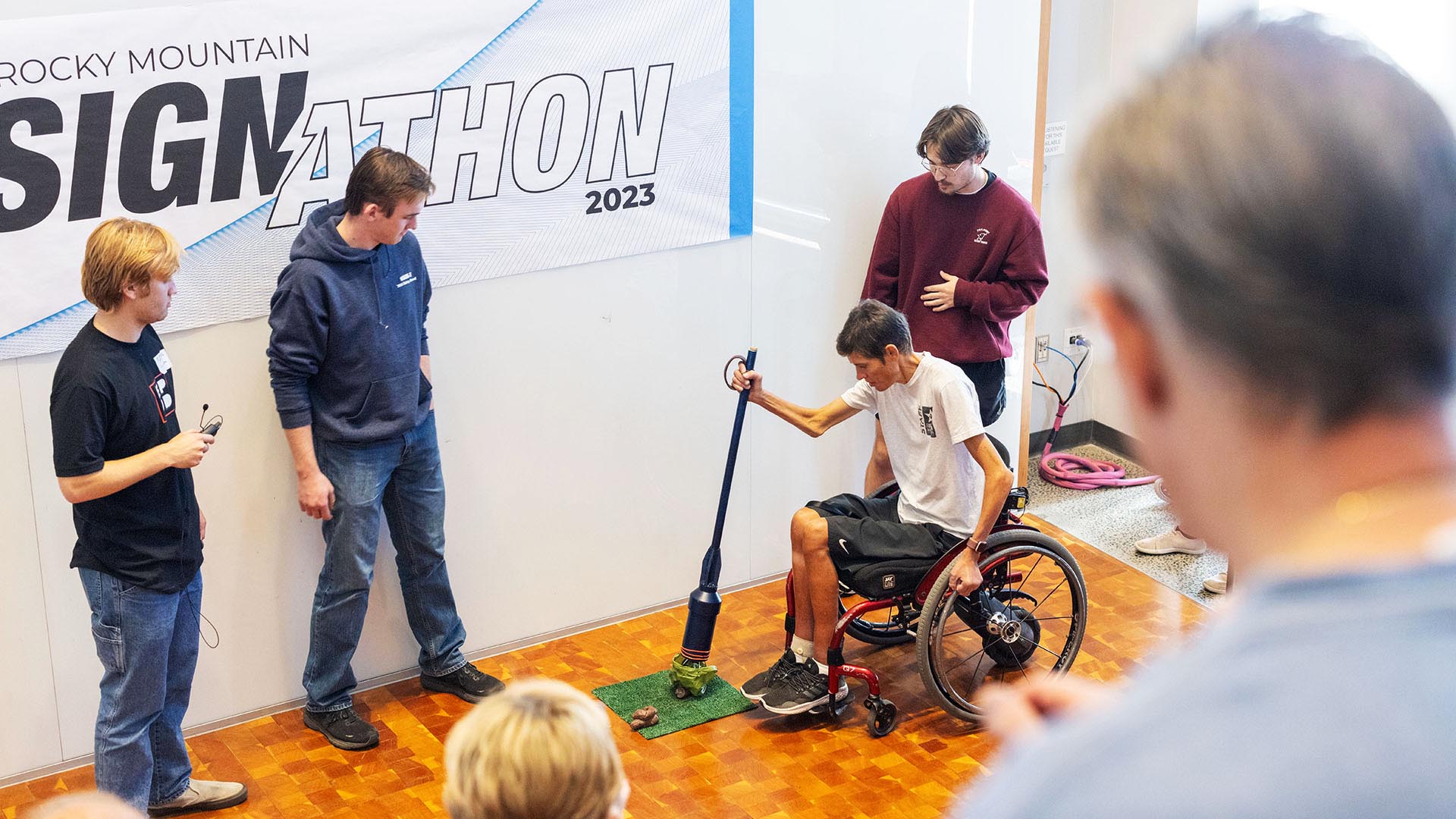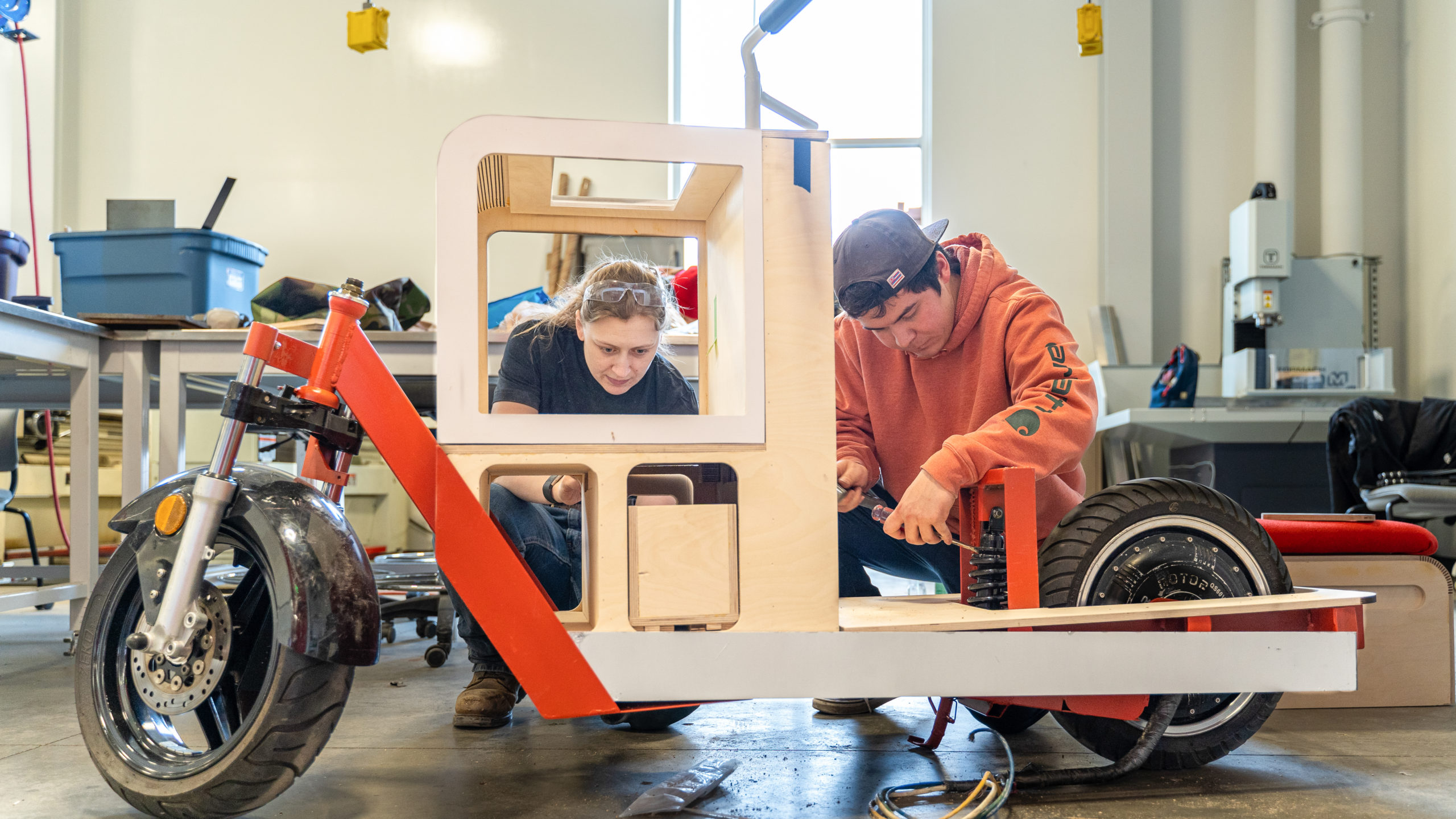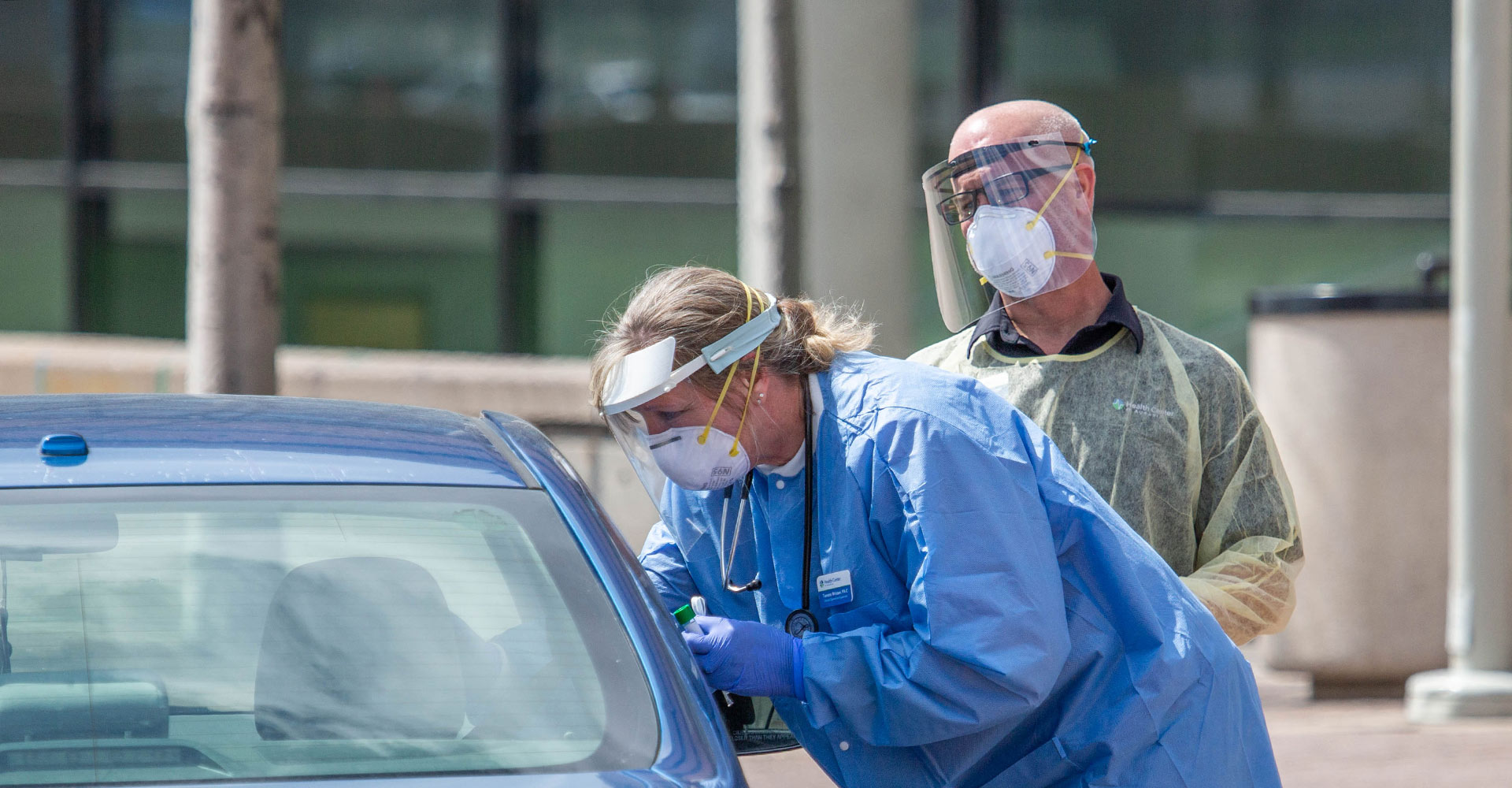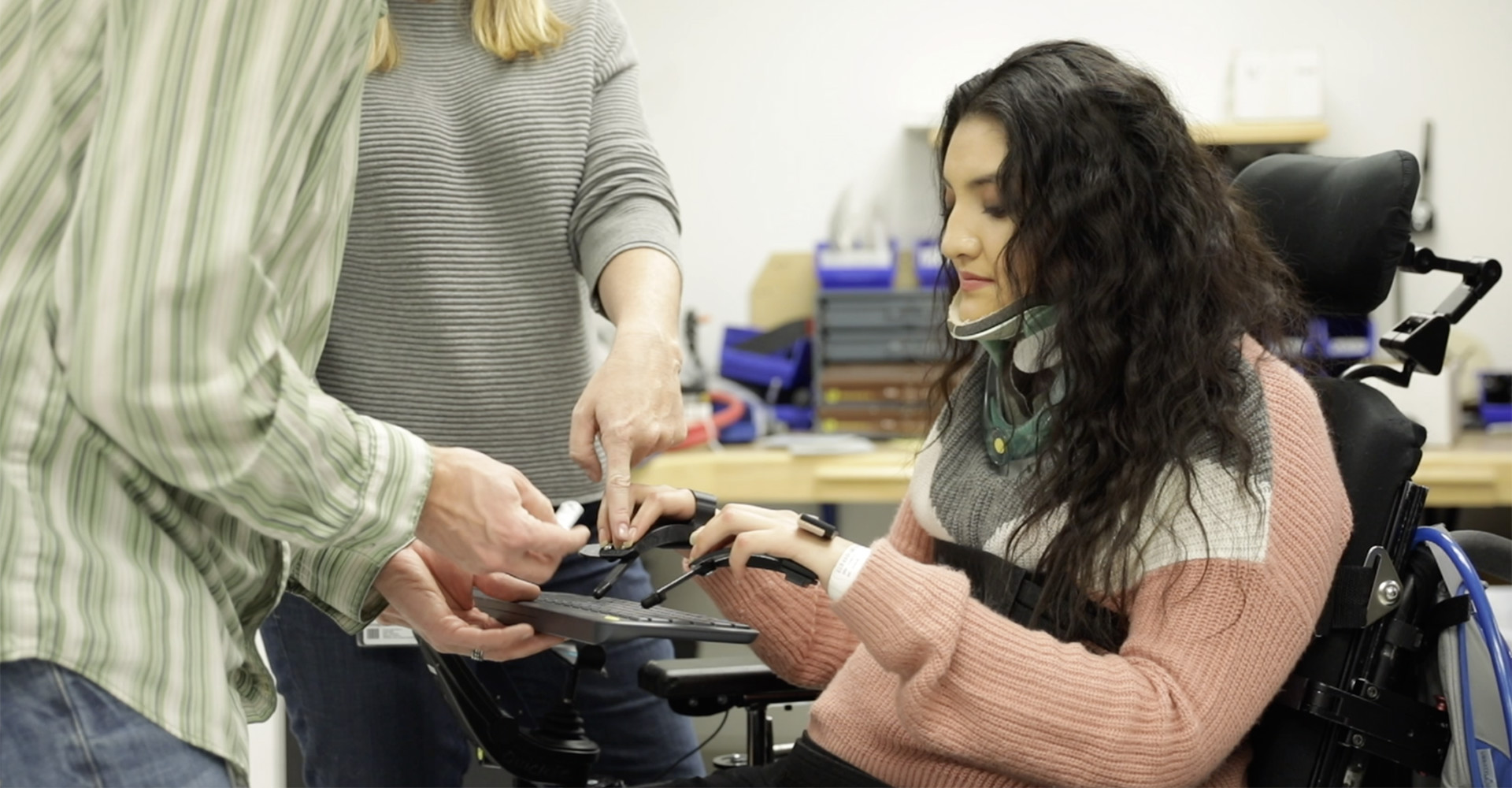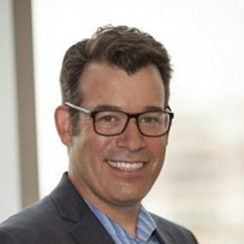VIDEO: Robotics Club tackles lunar-colony challenge
With a grant from NASA MINDS, MSU Denver students have developed a prototype for a swarm of robots designed to survey land on the moon.


Zero-gravity. Corrosive moon dust. Dangerous terrain. These are just a few of the problems NASA engineers have to consider when planning for colonies on Mars or the moon.
Enter Metropolitan State University of Denver’s Robotics Club. Through the NASA MINDS undergraduate-student design program for Minority Serving Institutions, the club received a grant to build space technology that will help solve some of the challenges NASA engineers face with the Artemis mission.
“The Artemis mission is a multistep mission where we would like to create a colony on the moon,” said Jacob Fifield, Computer Engineering student and Robotics Club president. “The moon is our test ground for living on other planets.”
RELATED Q&A: The Artemis space program
He and the other Robotics Club members, along with help from MSU Denver faculty members, are trying to solve the problem of how to survey land around future colonies in a safe way, ideally without humans. The solution: an autonomous swarm of robots that can see below the surface using ground-penetrating radar.
“The ideas is that we’ll be able to create a 3D map of the resources that could potentially lie underneath the lunar surface,” Fifield said.
The prototype has been years in the making. The Robotics Club, which went on hiatus during Covid, created simulations for the robots last year and was a finalist in the NASA MINDS program. This year, it has begun 3D-printing the components that hold the robots together. The club even created a circuit board from scratch, which took a month to design, Fifield said.
The students are hopeful that NASA will use the framework they developed and apply it to the technology for the Artemis mission.
“Having autonomous mapping can help us not only on the moon but on the Earth as well,” Fifield said. “You can send a robot to a more dangerous place and get better data than if you had to send a human out. Robots can work more efficiently.”
RELATED: Welcome to the Fourth Industrial Revolution
One of the goals of the NASA MINDS challenge is to expose students to the research-and-development processes at NASA through hands-on design. Students are allowed to focus on any space technology that interests them the most as long as it applies to the needs of the Artemis mission.
Fifield is a big fan of the program and says he’d like to participate again next year.
“I think the biggest unique opportunity for students is seeing how exactly an engineering process happens at NASA,” he said. “Real engineers use this (process) to solve some pretty crazy problems, and we get to partake in that process. I think that’s really cool.”

